Exploring the Fountain of Youth: Methylene Blue’s Potential Anti-Aging Benefits

Image: Nil Taskin Digital Art
Incredible anti-aging benefits of Methylene Blue
Methylene Blue is a compound that has been explored for its potential anti-aging benefits, among various other medical applications. Its use spans from being a medication for certain conditions to a dye in laboratory settings. The interest in Methylene Blue’s anti-aging effects is largely due to its properties as an antioxidant and its ability to improve mitochondrial function. Here’s a summary of the potential anti-aging benefits of Methylene Blue:
1. Antioxidant Properties: Methylene Blue is known to have strong antioxidant properties, which can help in reducing oxidative stress in cells. Oxidative stress is a key factor in the aging process, contributing to the damage of cells and tissues over time. By neutralizing free radicals, Methylene Blue could potentially slow down some aspects of the aging process.
2. Mitochondrial Enhancement: Mitochondria are the powerhouses of the cell, and their function tends to decline with age. Methylene Blue has been shown to improve mitochondrial function, which can lead to increased energy production in cells and potentially slow down aging-related declines in energy levels and cellular health.
3. Neuroprotective Effects: Some research suggests that Methylene Blue may have neuroprotective effects, making it of interest for the treatment or prevention of neurodegenerative diseases like Alzheimer’s and Parkinson’s. Its ability to enhance mitochondrial function and reduce oxidative stress could contribute to these effects, potentially helping to maintain cognitive function as one ages.
4. Potential in Skin Aging: There is also interest in Methylene Blue for its potential to combat skin aging. Its antioxidant properties may help protect the skin from damage caused by UV radiation and other environmental stressors, which can lead to premature skin aging.
While these potential benefits are promising, it’s important to note that research on Methylene Blue’s anti-aging effects is still in the early stages. Much of the evidence comes from preclinical studies, such as those conducted in cell cultures or animal models, and there’s a need for more clinical trials to fully understand its effects in humans, including optimal dosages and long-term safety.
Moreover, Methylene Blue can have side effects and interact with certain medications, so it’s crucial for individuals to consult healthcare professionals before considering its use for anti-aging or any other purpose.

Image: Nil Taskin Digital Art
Can we find in drug stores?
Methylene Blue is available in various forms and for different uses, including as a medication and as a biological stain. Its availability in drug stores can vary depending on the country and the specific regulations governing medications and chemicals.
1. As a Medication: Methylene Blue is an FDA-approved medication for specific conditions, such as methemoglobinemia (a condition where hemoglobin is unable to release oxygen effectively to body tissues) and as a treatment for ifosfamide-induced encephalopathy. In these cases, it is available by prescription and could potentially be found in or ordered through pharmacies.
2. For Laboratory and Clinical Use: In its role as a dye for medical procedures, such as staining tissues during surgery or for diagnostic purposes, Methylene Blue is likely to be found in medical and research settings rather than typical drug stores.
3. Over-the-Counter (OTC) Supplements: Some dietary supplements containing Methylene Blue may be marketed for various health benefits, including cognitive enhancement or anti-aging, and these might be available in drug stores, health food stores, or online. However, the concentration of Methylene Blue in these products can vary, and their effectiveness and safety for long-term use have not been established through rigorous clinical trials.
4. Quality and Regulation Concerns: When purchasing any form of Methylene Blue, especially for health-related purposes, it’s important to ensure the product is from a reputable source and intended for human use. The quality and concentration of Methylene Blue can significantly affect its safety and effectiveness.
Given these considerations, if you’re looking to obtain Methylene Blue for any reason, it’s advisable to consult a healthcare professional first. They can provide guidance on whether it’s appropriate for your needs, discuss potential risks and benefits, and, if necessary, prescribe it in a form that’s safe and effective for medical use. For non-prescription uses, especially as a supplement, it’s crucial to exercise caution and seek products that are accurately labeled and comply with local regulatory standards.

Image: Nil Taskin Digital Art
Is it true that Methylene Blue better than Retinol?
Comparing Methylene Blue to Retinol involves evaluating two substances with different mechanisms of action and applications, particularly in skincare and anti-aging treatments. Both have shown promise in anti-aging research, but they serve distinct roles and have unique benefits.
Methylene Blue
– Antioxidant Properties: Methylene Blue is known for its potent antioxidant properties, which can help reduce oxidative stress in cells. Oxidative stress is a key factor in aging and can lead to the deterioration of skin health over time.
– Mitochondrial Function: It can improve mitochondrial function, which is crucial for energy production in cells. Enhanced mitochondrial function can contribute to healthier, more vibrant skin.
– Versatility: Research has also suggested potential benefits beyond skin health, including neuroprotective effects and possible applications in treating certain diseases.
Retinol
– Skin Cell Turnover: Retinol, a form of Vitamin A, is renowned for its ability to promote skin cell turnover. This process helps to diminish the appearance of fine lines, wrinkles, and uneven skin tone.
– Collagen Production: It supports the production of collagen, a vital protein that gives skin its elasticity and firmness. By boosting collagen, retinol can help reduce the visible signs of aging.
– Acne Treatment: Beyond anti-aging, retinol is also effective in treating acne and improving skin texture, making it a versatile component of skincare routines.
Comparison
– Mechanism of Action: While Methylene Blue acts primarily as an antioxidant and enhances mitochondrial function, retinol works by promoting skin cell turnover and boosting collagen production.
– Applications: Retinol has a more established reputation in skincare, particularly for its anti-aging and acne-treating properties. Methylene Blue’s applications in skincare are emerging, with research focusing on its antioxidant capacity and potential for improving skin health.
– Effectiveness: The effectiveness of Methylene Blue vs. Retinol can vary depending on the specific skin concerns and the formulation of the product. Some may find Methylene Blue to be beneficial for its antioxidant properties, while others may prefer retinol for its proven track record in reducing signs of aging and treating acne.
In conclusion, it’s not necessarily accurate to say one is “better” than the other overall; it depends on the specific needs, concerns, and goals of the individual. Future research may further elucidate the relative strengths and optimal uses of each compound in skincare. Always consider consulting with a dermatologist or skincare professional to determine the most appropriate treatment for your skin type and concerns.
Nil Taskin


